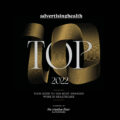When I was at Central St Martins – many moons ago now – one of the most inspirational things I did was my dissertation (yes art schools do expect you to write now and again). It was on the advertising creative revolution in the 1960s.
Most of you have probably seen adverts from the 50s and early 60s; beautifully painted posters of a mum holding a box of washing up powder, a dad driving a car looking strong and manly, and big pack shots front and centre of everything. Yet a big sea change was about to occur; agencies and brands started to realise that advertising within mainstream broadcast media was a nuisance in people’s lives. Sound familiar? Like all unwanted guests, if you turn up into someone’s home, you better bring a present.
A smile in the mind
The 1960s creative revolution transitioned advertising from showing pack shots and literal product messages to an ideas framework. Rather than patronising consumers and being over literal, the advertising worked to a new model. One that rewarded audiences for their participation. Sometimes it made them feel smart; sometimes it made them think; and, on occasion, it made them laugh. Either way, it evoked a human response that in turn made the advertising more memorable. Some called it a smile in the mind.
Let’s take the work for VW in the 1960s as a case study. It is iconic and was lauded for being the campaign that broke, and re-wrote, the advertising rulebook. I suppose when your brief is to sell a car borne in the Nazi era to Americans, you need to try something different. Bill Bernbach, Helmut Krone, Julian Koenig and many others too long to list here, were of a time that influenced and changed the advertising industry forever. Producing intelligent, ‘don’t underestimate the public’ advertising, VW shifted the needle from egotistical promotion to something honest that made people want to engage. Being captivating, injecting humour and shifting the tone of voice from didactic to conversational created a personality for the Beetle car – something that had never been achieved before through a commercial. They set the holy grail – taking a complex problem and reducing it down to something utterly simple and powerful. It was the dawn of modern-day advertising (if you want to know more, there is a great documentary all about it here: https://vimeo.com/177880740).
50 years on, the creative health revolution is underway
Fast-forward to today. I remember when I first came into pharma advertising (almost a decade ago now), the work that the industry was creating and awarding back then felt like an alternative universe. One where the creative revolution hadn’t happened. There was a vacuum of strategy, media, craft and great ideas. It didn’t make much sense to me, as the products were amazing and changed lives. Not in a way Coca-Cola can make you happy, we are talking about treatments that save lives. Really amazing! Another observation that I made was that no one ever wanted to admit they worked in health. The ultimate goal was to get into consumer agencies and erode any memory of working on pharmaceutical brands.
What I believed in back then, and still believe now, is that if our industry can demonstrate great work it can inspire the best creative talent into it and make healthcare communications the number one place for creativity.
Proof of this is where I am right now, sitting in my hotel room in Cannes about to start my Lions Health & Wellness Presidency. My Mum’s very proud, and to be fair I’m a bit chuffed to be the youngest and first British Asian to hold the position. The rise of health and wellness award shows has shone a spotlight on our industry and has started to help showcase the value of what we do and the societal benefits we can create for brands who are brave enough to think and act differently. When Burger King and IKEA enter a health and wellness advertising award show, you know that health is becoming part of everyone’s business.
To the next 50 years…
Healthcare communications has always been a bit like Hogwarts. Invisible to most people, massive when you get there, and filled with magic you haven’t yet discovered. There is a creative revolution in healthcare right now. Our documentary hasn’t been made yet and there’s never been a more important time to star in it. The industry is ready and waiting for new ideas, more diversity and talent. So, who’s in?
Shaheed Peera is executive creative director of Publicis LifeBrands, Publicis Resolute and Real Science (PLBRS)








